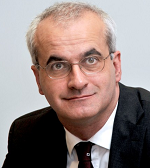Excitons determine the optical properties of semiconductors and are currently attracting renewed interest in novel systems like 2D-materials, for example, where they exhibit large binding and thus stability even under ambient conditions. After the proposition of the exciton as theoretical concept by Frenkel in 1931 [1], the experimental demonstration in cuprous oxide by Gross and Karrjew [2] took more than 20 years, profiting from the relatively large exciton binding energy of 86 meV in this material. Early studies also showed that the treatment by a simple hydrogen model provides a reasonable description of excitons. Since the pioneering works, not too much progress had been achieved in studying the exciton hydrogen series, until the combination of high resolution laser spectroscopy and high quality crystal material allowed the extension of the hydrogen series up to n=25 in 2014 [3]. The huge size of these highly excited states makes them the solid-state analogue of the famous Rydberg atoms [4] and leads to giant interaction effects, for example, with external fields [5]. The main focus will be, however, on studies of the interaction of Rydberg excitons among each other and with an electron-hole plasma [6].
References:
[1] J Frenkel, Phys. Rev. 37, 1276 (1931).
[2] E.F. Gross and N.A. Karrjew, Dokl. Akad. Nauk SSSR 84, 471 (1952); E.F. Gross, Il Nuovo Cimento 4, 672 (1956).
[3] T. Kazimierczuk, D. Fröhlich, S. Scheel, H. Stolz, M. Bayer, Nature 514, 343 (2014).
[4] T.F. Gallaher. Rydberg Atoms. Monographs on Nolecular and Chemical Physics. University Press, Cambridge (2005).
[5] See, for example, the following publications: Phys. Rev. B 96, 125142 (2017); 95, 035202 (2017); 95, 045102 (2017).
[6] J. Heckötter, M. Freitag, D. Fröhlich, M. Aßmann, M. Bayer, P. Grünwald, F. Schöne, D. Semkat, H. Stolz, and S. Scheel, Phys. Rev. Lett. 121, 097401 (2018).

